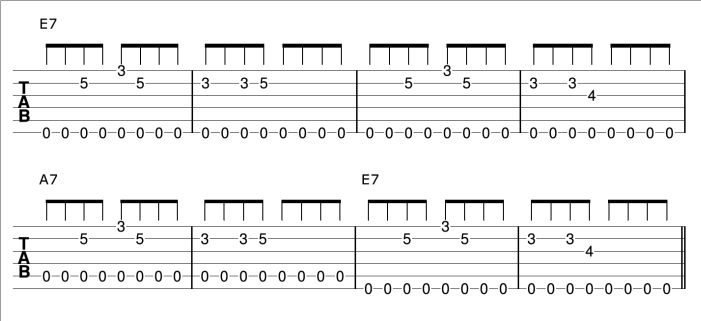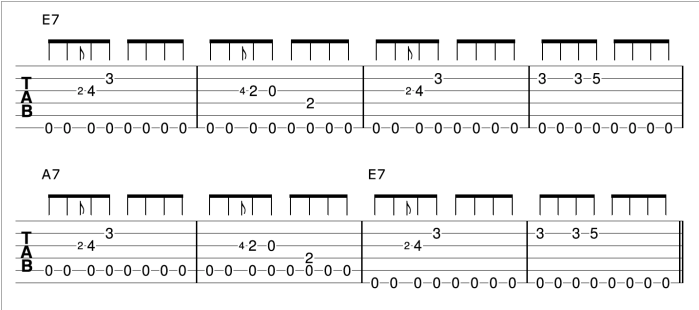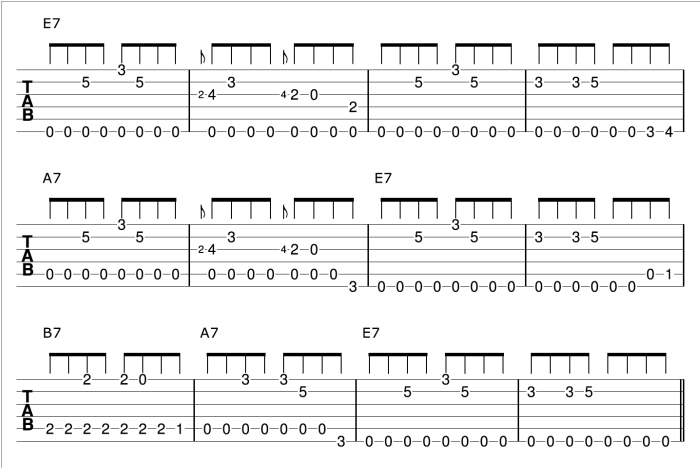Fingerpicking and blues go hand in hand when it comes to acoustic guitar playing and is always great fun to play! Better yet, you can easily create your own fingerpicking blues arrangements, where no other instruments or accompaniment is necessary, with some very basic, but awesome sounding fingerpicking ideas for your guitar playing. I am going to share some of these with you in today's article/video.
The particular approach we will look at today allows you to play both the melody and accompaniment parts of a blues tune at the same time. Once you get the hang of this, it will be very easy for you to do, sound really impressive, and have your listener believe there is a lot more going on than what you are actually playing.
What is this approach then?
Well, it involves the constant pedalling/plucking of the lower open strings with your thumb, while your fingers play riffs and melodies on the higher strings. The lower open string you are plucking will imply a chord of some sort, depending on what you are playing on the higher strings.
While this approach can be applied to other styles of music, it works particularly well with blues, and is a common fingerpicking technique used to great effect by many blues greats!
Let me show you a step by step method to get this awesome fingerpicking blues technique into your guitar playing right now!
OK, to begin developing this skill I am going to use the following partial pentatonic scale in the key of Em. This is a combination of both pattern 1 and pattern 2 on the top 4 strings of your guitar:

To start I want you to play this scale on the beat, using a quarter note rhythm, and with every note of the scale pluck the low open E string with your thumb like this:

Next, let's do the same thing, only this time your thumb will play a swinging 8th note rhythm on the low E string, while you continue to play the scale with a quarter note rhythm like this:

Be patient, this second drill is a little more challenging simply because your thumb and fingers are now doing different rhythms.
For the most part, I am palm muting the low open E string. This is done so the notes of the scale stand out in contrast to the pedalling bass note. You will hear this in the example and/or by watching the accompanying video
Both these drills are extremely effective in getting your thumb and fingers to play independently of each other. Get this right, and what I show you next will be really easy for you to do!
Blues Riff 1:
OK, so now you have the basic idea, and some drills to help develop this technique, we need a riff for our fingers to play on the higher strings while our thumb continues to pluck the low open E string.
I'm going to go with this riff from the pentatonic scale we were just playing:

This is a typical blues riff in the form of a call and response.
Now, while playing this riff, I am going to get my thumb to pick a constant 8th note rhythm on the low open E string, as I did previously with the scale, like this:

The result is very cool, because you get both the riff and your thumb creating the accompaniment to that riff.
In this case the open E string is implying an E7 chord, the I chord of a blues.
Here's the really cool part. By simply switching the thumb to the open A string we can now play the exact same riff over what will be an implied A7 chord, the IV chord of a blues in E, like this:

With our thumb plucking/pedalling both the E and A open strings we can now play the first 8 bars of an E blues, like this:

Blues Riff 2:
To reinforce this idea, let's repeat this process with another riff, also coming from the pentatonic scale:

As we did with the first riff, we simply get the thumb to pick the 8th note rhythm on the low E string to imply the E7 chord while playing the riff on the higher strings:

And then on the 5th string to imply the A7 chord:

And as we did with the first riff, we can organise it to cover the first 8 bars of a typical 12 bar blues in E like this:

While the E7 and A7 chords make up most of a 12 bar blues in E, there is the B7 chord we need to address if we want to play through an entire 12 bar blues using this fingerpicking approach.
We don't have a B open string to pedal in the bass like we did for the E7 and A7 chords. This is fine though as the pedal tone does not necessarily have to be an open string. Open strings just make things easier, so are preferable if they are available to you.
For the B7 we can simply hold the open B7 chord and pedal the root note (2nd fret, 5th string) as we play a simply melody on top like this:

Once we have our B7 chord sorted, we now have everything we need to play through a complete chorus of an E blues fingerpicking both the melody and accompaniment.
Let me show you an example. I will combine and mix ideas for the 2 riffs we worked with earlier across one chorus of a 12 bar blues in E:

So there you go, that's how effective the pedalling of a lower bass note can be when combined with riffs and melodies played on the higher strings.
You may have noticed I also included a couple of bass note connections between the changes of the blues I just played through, to add some interest and movement.
I hope you take this idea I have presented to you here today and apply it to your own guitar playing. Application is always crucial, and it's a lot of fun when you can sit there and fingerpick chorus after chorus of a blues without needing anyone else to play along with you!
Learn how to create your own acoustic fingerpicking blues arrangements on guitar with this free ebook/audio download. Here, I will present to you many other ways to play through a blues while fingerpicking your guitar.
Specializing in online acoustic guitar lessons, Simon Candy is based in Melbourne, Australia where he runs his own guitar school.